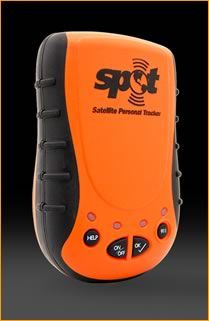I’ve always been an outdoorsman. Ever since I was a kid I’ve been running around in woods and field; hunting, shooting, exploring, hiking, backpacking, or studying nature. Spending time in the mountains and wilderness is one of my all-time favorite pastimes.
One thing I have learned about the great outdoors is that Mother Nature is neutral. She is not out to kill you or cause you harm. She will simply give you a test and you will have to use your wits, skills and available resources to pass the test. Every year, people die, needlessly, by not paying attention to basic rudiments of safety and survival. They go off on a hike, run into bad weather or get lost and what was a pleasant excursion turns into an extreme situation with life or death in the balance.
This year, as part of our new backcountry preparedness and rural law enforcement operations research for upcoming courses, I was researching new products at the SHOT Show in Las Vegas. On my way to another booth, I spotted the folks from SPOT and made probably one of the most important product discoveries to come into my life in a long time.
Imagine a device slightly bigger than a bar of soap and weighing about the same that can send out a message to people via satellite technology telling them that you are either OK, need help but not emergency help, or need a full blown search and rescue because you are in trouble.
The technology is here to make this both feasible and affordable. In the past, we had personal locator beacons that could send out a distress signal and get search and rescue to you. However, they cost around $700.00 and you can only send out a distress signal, nothing else.
 It gives you peace of mind to know that you can get help if things go bad. The author was conducting testing of the SPOT unit while traveling through a Colorado blizzard on Rabbit Ears Pass just east of Steamboat Springs, CO in February, 2008 to ensure function in extreme conditions. |
How It Works
SPOT uses the GPS satellite network to find its location. It then uses the GEOS satellite network to transmit that location and the person’s status via the onboard keypad. The SPOT satellite network will send a predetermined message that is written by the owner in advance as either a text message, an email link of the location of the user on Google maps, complete with coordinates; or both.
There are 4 buttons on the unit with each serving a specific purpose. The ON/OFF button is self explanatory. The OK button is depressed when you want to check in and let someone know that all is well. I set mine up to send a text message and email message to me as well as my wife and other friends when I am traveling across the US or through the mountains in bad weather.
Many times, cell phone coverage is non-existent due to terrain features. I tested this feature throughout Western Colorado and I had a Navy Seal friend send me email messages from his SPOT messenger up in the backcountry of Alaska. It works like a charm! When I turn the unit on, I send an OK signal to test the unit as SPOT recommends. Within a couple of minutes, I get the message on my phone and I am ready to go.
When I don’t have cell coverage, the unit can still send out your message to friends and family even if you don’t receive inbound messages. When you get back into cell range, you will get the text message you sent to your phone.
The HELP key is used when you need assistance but it is not a real emergency. It functions basically the same as the OK button except that it will send out a pre-programmed message that you recorded earlier saying whatever you deem appropriate. Let’s say you ran out of gas or had a flat tire and you are in a desolate area without cell phone coverage. Or, you need some backup on a situation and you can’t get through on the radio or cell phone.
Using the HELP key, you can send a text message via satellite to a phone number and email address at your law enforcement dispatch center computer. It will send a link via Google maps showing your location on the map with GPS latitude and longitude coordinates. How cool is that?! You can do the same thing with the OK key.
Using the OK and HELP functions, I usually receive a text message back to my phone in a couple of minutes.
If I want to mark a location or run a track, I either hit the OK button or turn on the tracking function. When I get back home, I go to my SPOT account and download the track or OK points. Then, on Google Maps, I can see where I have been. Yes, you can do this with your GPS as well. With SPOT, you can send out messages using the OK button or optional tracking function and they can track you in real time!
Now, let’s say you get into some real trouble you can’t get out of too easily. Hitting the recessed 911 key activates the Search and Rescue function that goes to the Search and Rescue Center in Houston, TX that SPOT uses. Through this system, they will acquire your location, try to contact the emergency contacts you listed on your account and, if you can’t be located shortly, they will activate the search and rescue function in your area to locate you.
 Rural and backcountry law enforcement officers will appreciate the extra security that SPOT provides when radio and cell phone coverage may be diminished or non-existent in certain locations. (Photo by the author) |
Talk about peace of mind!
I had an almost fatal fall in the backcountry in 1982. I could have really used this messenger then. It was touch-and-go for a while but I was able to get out after suffering some major trauma.
Imagine officers or emergency personnel operating in the backcountry, checking in when they can’t get cell phone or radio coverage. Teams can operate in the backcountry and send in updates of progress that a command center can track via computer and know the location of personnel.
With the optional tracking function, each person (or team) can automatically send out an electronic breadcrumb trail of their route instead of having to stop and find a high point to talk on the radio to someone.
There are endless uses for these units that are only limited by imagination. Hunting, fishing in remote areas, giving them to your kids to check in with if they are out and about or on an outdoor trip, search and rescue, cost effective emergency service and the simple, yet profound ability to check in with loved ones or friends and let them know you are ok when you are traveling etc.
I’ve used this unit for several months in all kinds of weather conditions. I took it on high mountain passes over 10,000 ft, through snowstorms and near whiteout conditions, on remote highways with no cell phone coverage, on long training bike rides etc. It functions precisely as advertised. It is waterproof, functions in extremes of hot and cold temperatures, has good battery life (high quality lithium batteries are necessary) and is very simple to operate.
The unit costs around $150 to $170 to purchase. There is a $99 subscription charge (per year) to send the various messages. The tracking function that allows you to put out electronic breadcrumbs every 10 minutes cost an extra $50.


